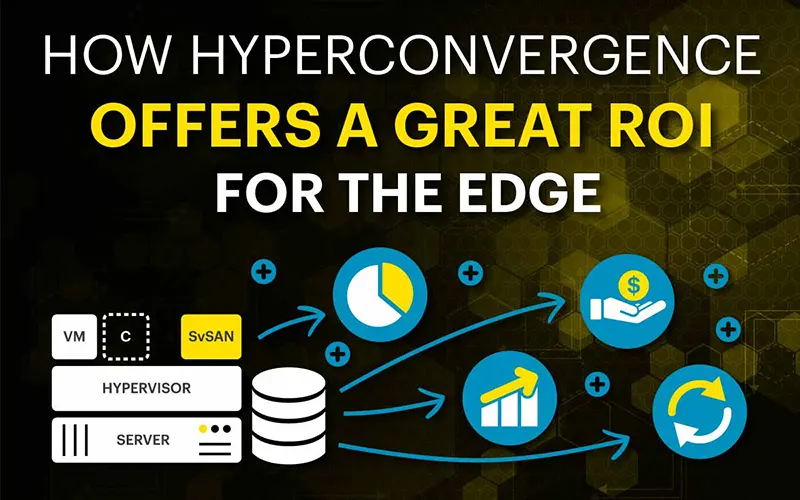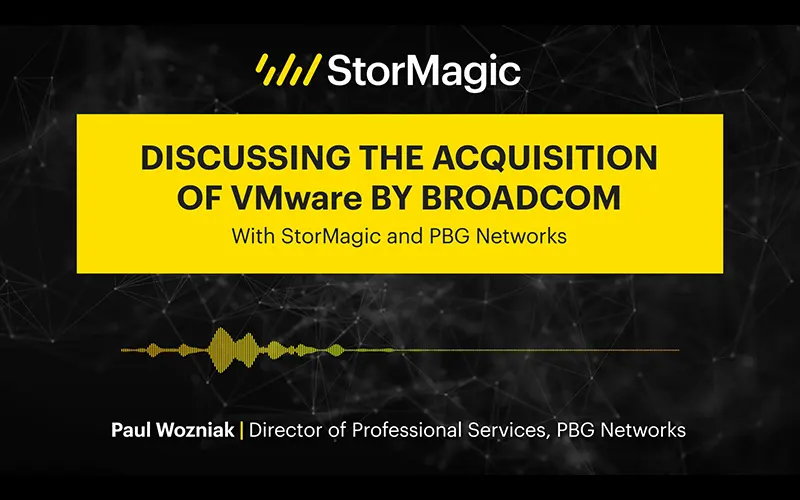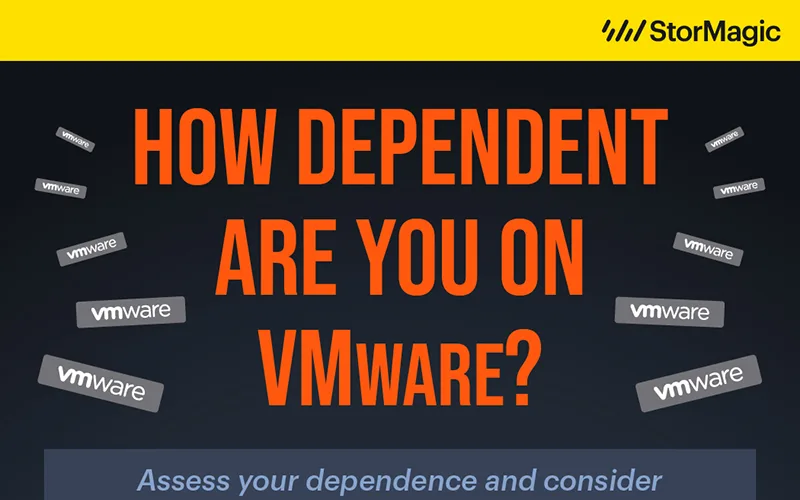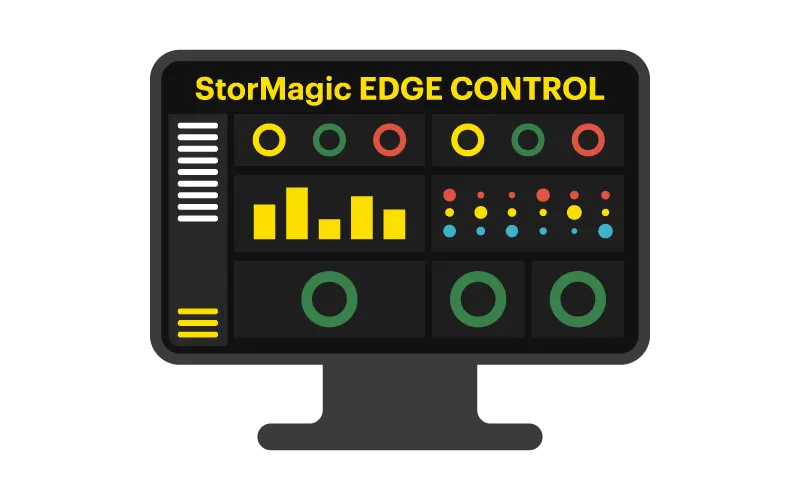Continual data growth, storage and IT administration budgets, as well as minimal downtime are concerns being shared by a large proportion of storage managers in charge of edge and remote office/branch office (ROBO) locations.
Presented with a conventional set-up of storage arrays, network hardware, and compute nodes engineered together, storage managers can find themselves with concerns over budget, skill set, and availability. For this reason, many are moving away from conventional converged infrastructure (CI) to hyperconverged infrastructure (HCI) solutions.
So, what is a hyperconverged infrastructure solution, anyway?
A hyperconverged infrastructure solution consolidates computing, networking, and storage resources into a single, streamlined datacenter architecture. Traditional datacenter architecture requires specialist hardware, with each piece designated for a specific function, whereas hyperconverged infrastructure utilizes simplified hardware and software components. The goal of hyperconvergence is to virtualize the datacenter environment and remove complexities, by reducing the amount of hardware needed to operate.
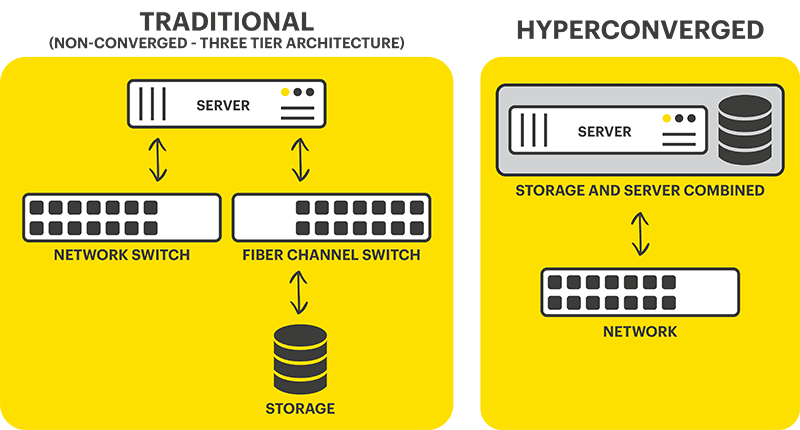
Modular hyperconvergence systems are therefore highly suited to edge environments and SMBs working with a lean IT workforce and limited space and resources on-site. Read more about the definition of hyperconvergence with our beginner’s guide.
What are the benefits of hyperconvergence at the edge?
Hyperconverged systems can benefit users at the edge for many reasons, especially when comparing them to converged infrastructure (CI).
Hyperconverged infrastructure addresses common challenges at the edge by decreasing the amount of space, IT support, and budget needed to operate. HCI converges traditional datacenter hardware components into a single virtualized appliance, requiring a much smaller physical footprint.
As it is easy to operate, it eliminates the need for specialist IT support and is much more affordable thanks to it decreasing the amount of expensive, physical hardware needed per site. It delivers superior network performance and resiliency, as software running on each server node distributes all operating functions across the cluster.
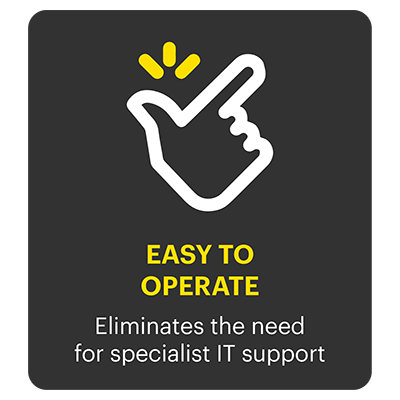

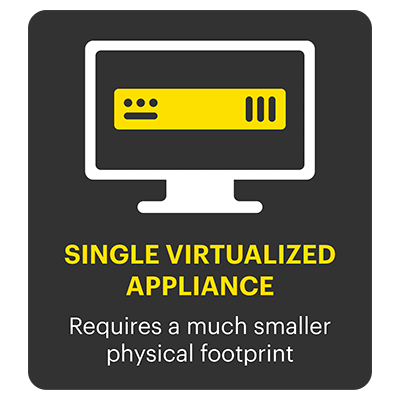
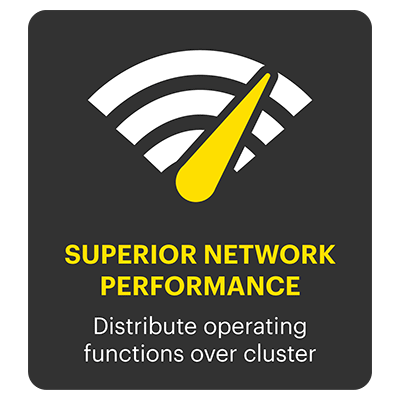
How does hyperconvergence offer a good ROI?
You may have recently deployed HCI at your edge location. Or perhaps you’re still mulling over your options. Either way, you’ll likely be wondering what ROI hyperconverged infrastructure could offer you.
Some of the most notable ways hyperconvergence offers a good ROI for organizations are high availability, scalability, manageability, and a reduction in upfront and running costs. Keep reading to learn more.
High availability
One of the biggest benefits of hyperconverged infrastructure is that these systems are designed for application failover. Apps are migrated between nodes so that in the event of a failure, all data is kept safe. This minimizes any downtime, keeps business-critical applications operational, and provides valued customers using these apps with an exceptional and uninterrupted user experience.
What’s more, high availability with hyperconvergence can be achieved using as little as two physical nodes and a single virtual “witness” node. Read this datasheet to learn more.
Easy to scale out, and to manage
Converged infrastructure is made up of separate physical hardware components, making it much more difficult to scale.
Hyperconverged systems on the other hand can be easily scaled out gradually as needed with additional storage in each node, or with the addition of entire nodes to the cluster. Its ease of scaling is ideal for businesses expecting large data growth in future years allowing them to plan ahead without the worry of purchasing the correct amount of storage or additional infrastructure when they do. See how easy it is to scale hyperconverged infrastructure in this white paper.
Reduces cost
Compared to the expensive bespoke tools found in converged systems, hyperconverged infrastructure (which typically uses industry-standard x86 servers) costs far less in both deployment and management of systems across edge and ROBO locations.
Since there’s no complex hardware involved in a typical hyperconverged solution, IT support to run and maintain the systems is also dramatically reduced. Depending on the chosen solution, this could also save companies in both time and labor costs, as they no longer need to send IT personnel out to remote edge locations to perform maintenance or upgrades.
Hyperconvergence is ideal for the edge (with only 2 nodes required)
StorMagic SvSAN enables you to introduce hyperconvergence through a virtualized shared storage platform and was made specifically for harsh edge environments. SvSAN is hugely flexible, offers enterprise support, and requires only two nodes to run – slashing server costs compared to other HCI solutions by at least 33%.
Still have questions? Discover how the benefits of hyperconverged infrastructure can be achieved with highly available 2-node clusters in this white paper with architecture schematics that show how such infrastructure can be built.

